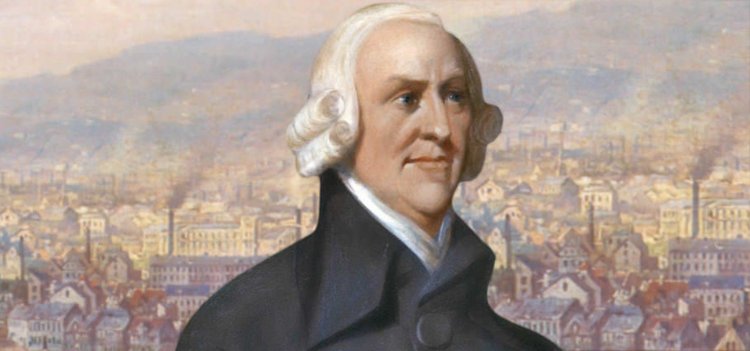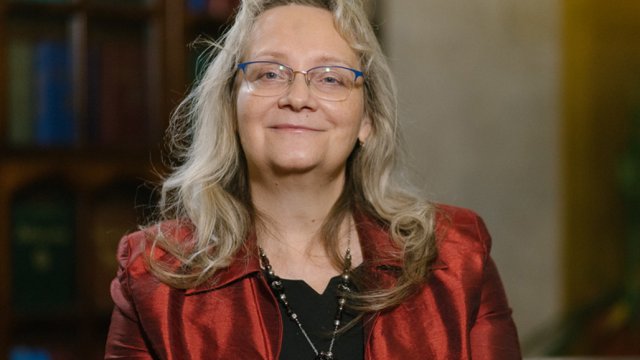Official:
Adam Smith. 5 (16) June 1723 – 17 July 1790. Adam Smith. Scottish economist, philosopher, one of the founders of the modern economic theory. Member of the Royal Society of London
Life and Work:
1. Everyone who has read Eugene Onegin knows that Pushkin’s hero “railed at Homer and Theocritus, instead he studied Adam Smith and in economics was well versed.” Adam Smith is even jokingly called the “Smith of Economics,” as “smith” is translated from English as “blacksmith.”
2. Thanks to the great Russian poet: now the Scottish economist and philosopher is known to all reading people, even those who are far from economic sciences. However, it is impossible to go on without details, and they are also quite interesting. Adam Smith was born on June 5, 1723, not far from the capital of Scotland, Edinburgh.
3. Adam was born fatherless: his father, a customs official, died six months before his birth.
4. When Adam was four years old, he was abducted by the Romani, but his uncle quickly rushed in pursuit and returned the child to his inconsolable mother.
5. His mother devoted her whole life to her only son, and it has to be said that she achieved excellent results: an intelligent boy entered the University of Glasgow at the age of fourteen. However, this was not so unusual: a century later, William Thomson, the future Lord Kelvin, became a student at the age of ten.
6. At the University of Glasgow, Adam Smith studied logic, moral philosophy, mathematics, and astronomy. His classmates concluded that he was a scientist but a strange guy – he could talk to himself or suddenly go deep into himself in the middle of a noisy student feast.
7. Nevertheless, the “strange fellow” grinded away at his studies more and more persistently: at the age of 17, Adam Smith received a scholarship at Oxford. However, the famous university disappointed Adam Smith. “At Oxford University, most of the professors, for many years, have completely abandoned even the appearance of teaching,” he wrote thirty years later.
8. Adam Smith did not repeat his professors’ mistakes. Later, he was giving lectures at the University of Edinburgh, holding classes at the University of Glasgow and even became its dean. He was giving lectures on moral philosophy, which meant theology in those days, ethics, jurisprudence and political economy at the same time. Smith published his first book, The Theory of Moral Sentiments, based on the materials of his lectures.
9. Living in commercial and industrial Glasgow imperiously pushed scientist to economics: the impact of economy on life was seen especially clear here.
10. Adam Smith stated his economic views in books, the most famous of which was An Inquiry into the Nature and Causes of the Wealth of Nations. Adam Smith believed that the wealth of nations would spring from free economy. That’s why now he is considered the father of the classical liberal economic theory.
11. Adam Smith explained how the free market worked. Since then, it has been the foundation of economic education. Anyone who is not a complete stranger to the economic theory has heard of the “invisible hand of the market.” “Little else is requisite to carry a state to the highest degree of opulence from the lowest barbarism, but peace, easy taxes, and a tolerable administration of justice: all the rest being brought about by the natural course of things,” wrote Adam Smith.
12. Here is another of his indisputable thoughts: “Great nations never get poorer due to the squandering and imprudence of private individuals, but they often get poorer due to the squandering and imprudence of state power.”
13. In 1778, the already world-famous scientist was appointed one of the five Scottish Customs Commissioners in Edinburgh. With a very high salary of 600 pounds sterling at the time, Smith continued to lead a modest life and spend money on books and charity.
14. Public service interfered with his scientific activities. Adam Smith never wrote A General History of Culture and Science. However, the scientist's notes on the history of astronomy and philosophy and fine arts were published after his death.
15. In Smith’s lifetime, the Theory of Moral Sentiments was published six times, and The Wealth of Nations – five times.
16. Contemporaries recalled that Adam Smith was slightly above the average height; had regular facial features, gray-blue eyes, a large straight nose and straight figure. He used to dress discreetly, wear a wig and like walking with a bamboo cane on his shoulder. Sometimes he was talking to himself.
17. Adam Smith was never married, but he never lived in seclusion either: in Edinburgh, he was hosting dinners for friends on Sundays. He used to visit, among others, Princess Yekaterina Romanovna Vorontsova-Dashkova who was living in the capital of Scotland when her son was studying at a university there.
18. Now An Inquiry into the Nature and Causes of the Wealth of Nations is included in the list of the 100 best Scottish books, and its author is counted among the greatest Scots of all time. Margaret Thatcher claimed that she always had a copy of The Wealth of Nations with her.
19. The Adam Smith Statue stands at Parliament Square in Edinburgh. There are also monuments to Smith's works: Circulating Capital is located in the territory of the University of Connecticut – it is a tall cylinder which features an extract from The Wealth of Nations on the lower half, and on the upper half, some of the same text, but represented in binary code. This monument is confused with Adam Smith's Spinning Top that adorns the University of North Carolina at Charlotte.






















